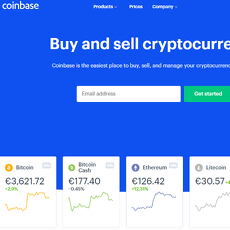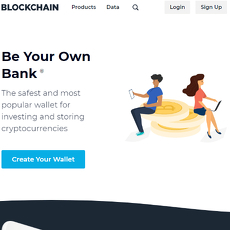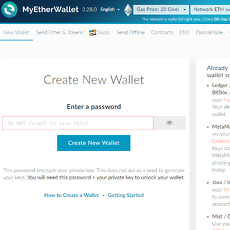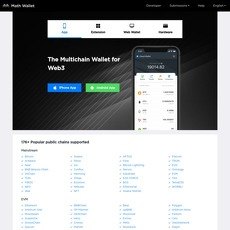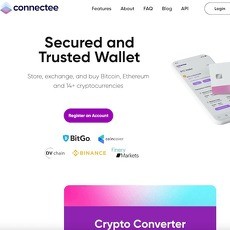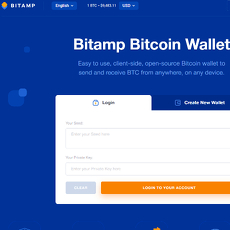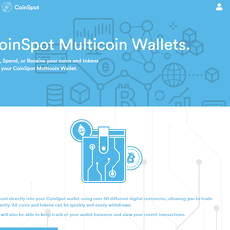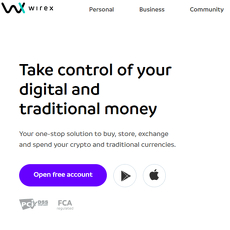Bitpanda Wallet Review
Bitpanda Wallet
www.bitpanda.com
Bitpanda Wallet Review Guide: Everything You Need to Know (+ FAQs)
Ever found yourself staring at all those crypto wallet options and wondering, "Which one can I actually trust with my coins?" You’re not alone. Picking the right wallet is a big deal—literally the difference between sleeping soundly and stressing over your digital assets getting hacked, frozen, or lost forever.
I’ve spent years exploring, testing, and reviewing every kind of crypto wallet out there. The good, the bad, and the “oh no, did I just lose everything?” If you feel overwhelmed by all the choices, I promise, you’re about to get some clarity.
Why Choosing the Right Crypto Wallet Is So Important
Let’s be honest—crypto is exciting, but it can be overwhelming. The lure of easy access often hides risks just beneath the surface. We’ve all read the headlines about massive exchange hacks or stories of someone losing their entire stash to a shady wallet. It stings to think that a simple mistake, like picking the wrong wallet, could wipe out your savings.
Here’s what I’ve learned from helping thousands of readers:
- Security isn’t optional: You’re your own bank in crypto—there’s no "forgot password" or “call customer support” if you choose wrong.
- Convenience matters: If a wallet is confusing or slow, you’re less likely to use it—or worse, might make a costly mistake under pressure.
- Features vary widely: Some wallets can only hold one coin, while others offer built-in swaps, portfolio tracking, or even cashback programs.
You want more than just safe storage. You want hassle-free access, multi-coin support, and peace of mind that your coins are protected—no matter what the crypto market throws your way.
Bitpanda Wallet Might Be Exactly What You Need
Now, you might be hearing about Bitpanda popping up on Reddit and Twitter, or maybe a friend recommended it because of how easy it is to handle. But what really makes Bitpanda Wallet stand out? Is it actually as beginner-friendly as everyone says? Does it solve those classic problems—confusing interfaces, random lockouts, or limited coin options?
Stick around, because I’m going to break down what makes this wallet worth checking out, share key features, and answer the most-asked questions I get from real users like you.
Worries About Safety, Accessibility, or Just Getting Started?
Still wondering if Bitpanda is even legit? Want to know how easy it is to cash out, or set up an account in less than 10 minutes? All those questions are coming up right here, with straight-up answers and real examples—no confusing technical talk or marketing fluff. Whether you’re unplugging your hardware wallet for the first time or just want something simple to use on your phone, you’re in the right place.
Ready to find out exactly what a crypto wallet actually does—and why that matters before you put your assets anywhere? Let’s take a look at the basics next (trust me, you’ll want to see this before making any wallet decision).
A Quick Intro to Crypto Wallets (and Why They Matter)
Before you start stacking those satoshis, let’s get one thing super clear—your crypto is only as secure as the wallet you choose. Forget the technical jargon; it boils down to this: lose your wallet, and it’s like losing the keys to your digital kingdom. There’s no “forgot password” button in crypto.
“Not your keys, not your coins.”
This famous line floats around every crypto community for one reason—it’s absolutely true. When you use a crypto wallet, you’re actually storing the private keys that grant access to your digital funds. You wouldn’t hand your house keys to a stranger, right? Same logic here. It’s your key, your call.
What’s a Crypto Wallet?
Let’s cut through the confusion. A crypto wallet is simply an app, website, device, or even a printed piece of paper that keeps your private keys safe so only you can access your cryptocurrencies. Without it, you’ve basically left your assets out in the open for anyone to snag.
Picture it like this: Imagine you found a treasure chest (your coins), but only you have the combination (your private keys). The wallet is the safe—keep it locked tight, and your treasure stays yours.
Types of Crypto Wallets: Which Is Best for You?
So, how do you actually store those keys safely? The type of wallet you choose can make a huge difference, not just in security but how convenient it is for your day-to-day crypto moves.
- Software wallets: These include desktop apps, browser extensions, web wallets, and mobile apps. Think of them as apps on your computer or phone. Super handy, but because they’re online, they can be vulnerable if you’re reckless (malware, phishing, you name it). Real talk: Coinbase Wallet and Exodus are popular examples if you want to see what software wallets look like in action.
- Hardware wallets: Physical devices (think USB sticks) that store your keys offline. Brands like Ledger and Trezor have become household names for anyone serious about security. In 2022, a CoinDesk study showed hardware wallet sales skyrocketed as hacks made headlines—proof that people are getting smarter about crypto safety.
- Paper wallets: It sounds old-school, but literally printing out private keys onto paper was a thing in crypto’s early days. Still, not exactly practical (what if you spill coffee on it or your cat decides it’s a chew toy?).
Each has its trade-offs. If you’re an active trader, a software wallet’s speed might suit you. If you’re more about long-term holding, hardware might feel safer. And if you’re a meme collector…well, paper wallets still work if you like the risk!
What to Look For in a Great Crypto Wallet
Let’s be honest, not every wallet is created equal. Before you trust any platform with your assets, watch out for these must-haves:
- Coin support: Sticking to just Bitcoin? Cool. Want Ethereum, Cardano, or even a meme coin like Doge? Make sure your wallet can handle your whole lineup.
- Security features: At a minimum, look for things like two-factor authentication and encryption. Some wallets go the extra mile with biometric logins or multi-signature tech.
- Accessibility and ease of use: Can you manage your coins from your phone on the go? Does the app feel intuitive, or do you need a PhD just to send some ETH?
- Extra features: Built-in exchanges, real-time price tracking, maybe even portfolio analytics. Some wallets go beyond storage—they help you actually use your crypto.
The right mix is going to depend on what you want—fast trades, iron-clad security, or a little bit of everything.
Ever wonder which wallets check all these boxes and are still beginner-friendly? That’s exactly what I’m about to uncover next. Stay with me—because if you’re curious about the platform that aims to blend simplicity with strong security, you’re going to want to see what’s coming up.
Introducing Bitpanda Wallet: Features and First Impressions
Alright, let me pull back the curtain on Bitpanda Wallet and why it’s been making waves lately. This isn’t just another bland wallet—you’ll see what I mean.
What Is Bitpanda Wallet & How Does It Work?
Bitpanda Wallet is way more than a basic software wallet. It’s totally baked into the Bitpanda exchange, so instead of juggling between websites and apps, you can manage everything in one spot. Whether you’re on your laptop at work or checking your portfolio in line at the coffee shop, it just works.
The first time I tried Bitpanda Wallet, I instantly noticed how frictionless the experience felt. No confusing interfaces or 20-click flows—just a slick dashboard. You log in, and boom: balances, coins, quick actions, all there. If you’re someone who’s tried to explain private keys to a friend and just saw their eyes glaze over, you’ll know how big a deal that is.
“Simplicity is the ultimate sophistication.”
—and Bitpanda seems to have taken that seriously.
Supported Cryptocurrencies: What Can You Store?
Here’s where Bitpanda gets competitive. You aren’t locked in to just the big names like Bitcoin or Ethereum (although both are right there up front). You can store, send, and receive a whole bunch of coins: Cardano, Polkadot, Litecoin—you name it. Bitpanda even throws in support for digital gold and other precious metals if you like mixing up your portfolio.
- Bitcoin (BTC)
- Ethereum (ETH)
- Cardano (ADA)
- Polkadot (DOT)
- Litecoin (LTC)
- Chill and cross-check the full asset list here anytime—there’s a lot.
For anyone (like me) who loves tinkering with altcoins now and then, this saves a ton of hassle. No jumping between wallets just because you’re holding ten different coins—Bitpanda keeps it under one roof.
Swapping, Buying, & Selling: How It Feels to Use Bitpanda
Let’s talk usability. Bitpanda’s built-in Swap is smooth—it’s almost scary how quickly you can swap Bitcoin for Solana or Euros for Ethereum. No need to send coins elsewhere or wait around for blockchain confirmations (at least for many supported assets). Swipe, swap, done.
Maybe you’re just starting and want to stack a little crypto here and there. Bitpanda lets you buy crypto using bank transfer, card, Apple Pay, or even some localized payment methods, depending where you live. What’s really cool is how you can switch in and out of fiat with just a couple clicks. Feel that urge to sell? No problem. Need to make a quick conversion back to Euros or Pounds? Easy.
The stats back this up, by the way: research shows that apps combining wallet management and instant exchange features see much higher user retention—and honestly, it just feels less stressful knowing you can react quickly if the market moves.
Accessibility: Using Bitpanda from Anywhere
One of the first things I scan with any wallet platform—where can you actually use it? With Bitpanda, access isn’t a roadblock. The web platform is easy for desktop fans, and the mobile app is polished for both iOS and Android users. You could literally manage your portfolio from your bed, your bus ride, or—in my case—while standing in line at the post office.
Do note: while most countries are green-lit, there are some regional restrictions (thanks, regulators—but you can check their official list to be sure). But for the vast majority of folks, sign-up is quick and location is rarely a deal-breaker.
A lot of wallets promise all-in-one solutions, but few actually nail it without making things complicated. So, can Bitpanda handle the pressure of actually keeping your digital assets safe and sound? Let’s get into the nitty-gritty on security, real-world safety, and whether Bitpanda actually puts your mind at ease… Trust me, you’ll want to stick around for this next part!
Security, Verification, and User Experience with Bitpanda Wallet
Let’s be real, nobody wants their crypto at risk. That’s why security is usually the first thing on everyone’s mind (mine included). With all the buzz about high-profile hacks and scams, trust means everything. So here’s exactly what you’re getting with Bitpanda—no hype, just facts.
Is Bitpanda Safe? How Legit Is It?
Bitpanda stands out by doing things by the book. They’re properly licensed—yes, that means official paperwork and actual oversight. They have a PSD2 payment service provider license, plus an e-money license, both major green flags. I did some research, and what really puts my mind at ease is their industry reputation.
They use the security essentials you’d expect from a top-tier platform: two-factor authentication (2FA), regular audits, and insured custodial holdings for your assets. Even if you check out Bitpanda’s Trustpilot or browse Reddit, you’ll see mostly positive vibes from users. Don’t just take it from me...
"Security is not just about technology—it’s about trust. Bitpanda is one of the few crypto platforms where I actually sleep well at night.” – A real (and grateful) Bitpanda user
How Do You Get Verified on Bitpanda?
If you’re expecting a hassle when signing up, you’ll be pleasantly surprised. The process is fast and doesn’t drag you through endless paperwork. You’ll need your phone, webcam, and a government-issued ID—passport, driver’s license, or ID card. The interface guides you step by step. I managed to get verified on my first coffee break (no joke). No mysterious wait times or endless email ping-pong. Bitpanda checks, confirms, and you’re done.
Protecting Your Coins: More Security Features
Let’s talk real-world examples. Passwords are good, but Bitpanda goes above and beyond:
- 2FA (Two-Factor Authentication): Adds an extra wall, even if someone somehow cracks your password.
- Email Confirmations: Every sign-in and withdrawal gets checked.
- Secure Storage: A big chunk of users’ funds are stored in cold wallets, away from hackers (the golden standard in the crypto world).
- Constant Upgrades: Frequent updates mean less chance of bugs and vulnerabilities sneaking through the cracks.
- Insurance: Yes, there’s insurance for custodial crypto. Not something every mainstream wallet can say—so you really can sleep easier at night.
Surveys have shown that most users rank 2FA and strong password requirements as the top factors in trusting a wallet—Bitpanda’s got both covered, front and center.
User Experience: How Easy Is It to Use Bitpanda?
Here’s the kicker: all this security, but somehow Bitpanda still feels easy (not clunky or scary for beginners). From first log in to your first transaction, the flow is super clear. No maze of confusing menus. Even when I tested on mobile with one hand during a walk in the park, it worked just as smoothly as on desktop. If you’re new or just busy, that simplicity matters.
The Bitpanda dashboard is uncluttered, with just what you need up front: portfolio view, buy/sell options, and price tracking. I get a lot of messages from newcomers saying, “It actually makes sense!”—which is a refreshing change compared to some wallets that feel like they require a tech degree just to move $20 worth of Bitcoin.
Ready to actually use your coins (not just keep them locked away)? You’ll want to know what the process is when it comes to cashing out, fees, and real-world customer support. Keep reading—everything you need to know about everyday Bitpanda use is just ahead!
Everyday Use: Cashing Out, Fees, and Customer Support
Let’s get real—at the end of the day, you want your crypto to work for you, not give you sleepless nights. It’s one thing having your coins stored safely; it’s another being able to cash out or get help without jumping through endless hoops. Here’s exactly how using Bitpanda for your day-to-day crypto needs plays out, from withdrawals to customer headaches (or, honestly, lack of them).
Withdrawing From Bitpanda: Here’s What Actually Happens
When it’s finally time to turn your crypto into something you can spend, Bitpanda keeps things straightforward. You sell your Bitcoin, Ethereum—whatever coin you’re holding—directly in the platform. Immediately, your fiat wallet gets topped up. From there, just select your payout method, whether it’s your usual bank account or even services like Skrill and Neteller.
For example, let’s say you’re sitting on some ETH and you’re ready for a nice dinner out. Sell it with a couple of taps, and your EUR wallet balance updates instantly. Move it to your bank, and, depending on your country and bank, you could see your funds later the same day. Compared to some old-school exchanges that leave you waiting for days, it’s refreshing to have your money hit your account without unnecessary drama.
Fees, Limits, and All the Small Print
If you’ve been in the crypto world for a while, you know “hidden fees” can be a huge pain. The good news here: Bitpanda puts their fees out in the open from the start. You won’t get caught off-guard. For buying, selling, or swapping, the live rate and spread are shown upfront—no sneaky add-ons once you click “confirm.”
Withdrawal fees depend on your payout method, but again, there are no surprises. Want a real-world example? If you sell €1,000 worth of Bitcoin, Bitpanda will show you the exact EUR amount you’ll get after the fee and any network costs. If you’re not verified, though, your limits per day and month are way lower—so it pays to complete the verification process early on. (And honestly, it’s quick; you won’t need to schedule your whole afternoon around it.)
Customer Support and Updates
If you run into trouble—maybe your payout is slower than expected, or you just can’t remember how to enable 2FA—Bitpanda’s Helpdesk is packed with searchable guides, FAQs, and a ticket system for real human support. In my own experience, most tickets get a response within 24–48 hours, which is faster than the crypto industry average if you’ve ever tangled with support at other major platforms.
I’ve also noticed Bitpanda is active in rolling out updates (based on both security best practices and community feedback). They keep you posted on new features and maintenance, which is handy if you like knowing your wallet is getting better rather than being left behind.
One thing a lot of newbies appreciate: Bitpanda will sometimes send helpful emails about platform tweaks or security improvements—so you’re rarely out of the loop unless you ignore your inbox.
Still hungry for the nitty-gritty details before pulling the trigger? I always recommend a good deep look at the fundamentals of wallets, fees, and security—this is the resource I like to keep handy for anyone comparing options or just wanting a sanity check on how wallet providers stack up.
Ever wondered exactly which details matter most for protecting your coins, or what to expect if something goes wrong with a payout? That’s about to get answered in the next section—so if you’ve got even a sliver of doubt left, keep reading. Trust me, the next part covers the stuff every crypto holder has on their mind. You’ll definitely want the inside scoop.
FAQ: Your Top Bitpanda Wallet Questions Answered
I get it—there’s a ton of info around, but most people just want straight answers. Here’s what everyone asks me about Bitpanda Wallet, with real talk and some simple explanations.
Is Bitpanda safe and legit?
Yep, Bitpanda checks out. It’s not just some random website launched overnight—Bitpanda is licensed under European law, actually holding a PSD2 payment license as well as an e-money license. It’s based in Austria, with years of operation and millions of users. Reviews on platforms like Trustpilot are pretty strong, considering the usual split you see with crypto companies. Of course, nothing is 100% bulletproof online, but compared to many shady wallets, Bitpanda is about as solid as you’ll find for a custodial wallet.
Can you withdraw money from Bitpanda?
Definitely. Here’s how it usually goes in practice:
- You sell your crypto in the Bitpanda app or website.
- Your fiat (euro, pound, whatever) shows up in your Bitpanda wallet.
- Send that straight to your bank with just a couple of clicks.
I've run a few test withdrawals myself, and the money always showed up within a day or two. Just remember—processing times sometimes depend on your bank or the payment method you pick.
How do you verify your Bitpanda wallet?
It’s pretty straightforward. Bitpanda wants everyone verified for extra safety and compliance. The steps:
- Create your account (email, password, the basics).
- Start the verification flow (on web or mobile).
- You’ll need a clear government-issued ID (passport or driver’s license) and a phone or computer with a camera.
- Follow the instructions. It’s all guided—you upload your ID, do a quick video or selfie, and fill in your details.
On a good internet connection, the whole process takes maybe five minutes. I’ve seen people get verified in under ten if their documents are ready—and according to user feedback in forums, most folks have a pretty smooth experience.
How does Bitpanda actually work?
Bitpanda is kind of like an all-in-one crypto dashboard. You can buy, sell, store, and even swap crypto (some people compare it to the feel of Revolut or Coinbase, but with more coins and cool features). One standout feature: instant swaps. It’s not just Bitcoin and Ethereum—there’s a decent range of coins, even some rare tokens. Everything’s managed from your browser or the mobile app. You want crypto? Buy it. Want it in your bank? Sell and withdraw. Super accessible for beginners, but also quick enough for crypto nerds like me.
Any downsides?
No wallet is perfect, right? Here’s what stands out:
- Online Only: Bitpanda is custodial and internet-based, so if you’re ultra-paranoid about online hacks, you might still prefer a hardware wallet for large amounts.
- Country Restrictions: Not everyone can sign up—you’ll want to check their supported countries list upfront.
- KYC Required: Full verification is a must. For privacy die-hards, this might be a dealbreaker.
But honestly, for most regular users, these aren’t huge red flags—just things to keep in mind when weighing up your options.
If there’s a question you still have and it isn’t here, just ask me in the comments or head to the news section. I’m always happy to help clear things up, especially when it comes to keeping your crypto safe!




